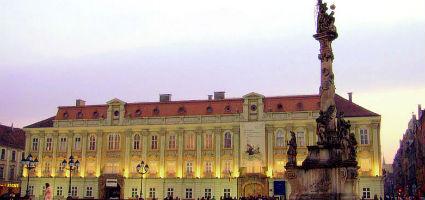In the 18th century, in the halls of the Local Council and in the Palace of the county there were already portraits of emperors, commanders and local dignitaries. Some of these were signed by some masters from Vienna or from Budapest, and some by local artists. Sava Petrovič, Konstantin Daniel, Melegh Gábor and later, in the second half of the century, Johann Wälder or Ferenczy József were called to finalize the portraits in the council hall of the town-hall's palace.The town rarely purchased works of the artists from Banat. Thus, at the begenning of the 20th century two compositions of big dimensions were bought and laid down at the museum: "The Wedding from Cana" (a copy after Veronese) of Brocky Károly and "The Colonization of the Schwabs in Banat" of Stefan Jäger.

